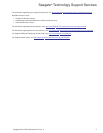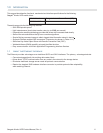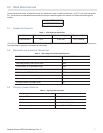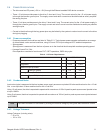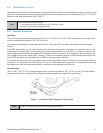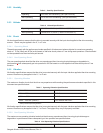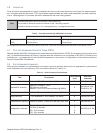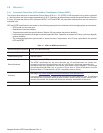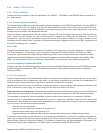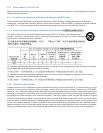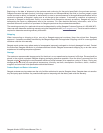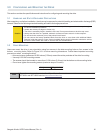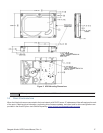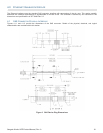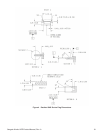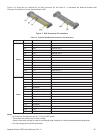Seagate Kinetic HDD Product Manual, Rev. A 13
2.10 AGENCY CERTIFICATION
2.10.1 Safety certification
These products are certified to meet the requirements of UL60950-1, CSA60950-1 and EN60950 and so marked as to
the
certify agency.
2.10.2 Electromagnetic compatibility
The Seagate Kinetic HDD hard drives are tested to a Class A standard per the CISPR 22 specification. Per the CISPR 22
specification “Class A ITE is a category of all other ITE which satisfies the class A ITE limits but not the class B ITE limits.
Warning – This is a class A product. In a domestic environment this product may cause radio interference in which case
the user may be required to take adequate measures.”
Drives are tested in representative end-user systems. Although CE-marked Seagate drives comply with the directives
when
used in the test systems, we cannot guarantee that all systems will comply with the directives. The drive is
designed for
operation inside a properly designed enclosure, with properly shielded I/O cable (if necessary) and
terminators on all unused IO ports. Computer manufacturers and system integrators should confirm EMC compliance and
provide CE marking for their
products.
Korean RRL
If these drives have the Korean Communications Commission (KCC) logo, they comply with paragraph 1 of Article 11 of
the
Electromagnetic Compatibility control Regulation and meet the Electromagnetic Compatibility (EMC)
Framework
requirements of the Radio Research Laboratory (RRL) Communications Commission, Republic of Korea.
These drives have been tested and comply with the Electromagnetic Interference/Electromagnetic Susceptibility (EMI/
EMS)
for Class A products. Drives are tested in a representative, end-user system by a Korean-recognized lab.
Australian Regulatory Compliance Mark (RCM)
If these models have the RCM marking, they comply with the Australia/New Zealand Standard AS/NZ CISPR22 and meet
the Electromagnetic Compatibility (EMC) Framework requirements of the Australian Communications and Media
Authority (ACMA).
2.10.3 FCC verification
These drives are intended to be contained solely within an enclosure (not attached as an external device). As such, each
drive is considered to be a subassembly even when it is individually marketed to the customer. As a subassembly, no
Federal Communications Commission verification or certification of the device is required.
Seagate has tested this device in enclosures as described above to ensure that the total assembly (enclosure, disk
drive
motherboard, power supply, etc.) does comply with the limits for a Class A ITE device.
Radio and television interference. This equipment generates and uses radio frequency energy and if not installed and
used in strict accordance with the manufacturer’s instructions, may cause interference to radio and television reception.
This equipment is designed to provide reasonable protection against such interference in a residential installation.
However there is no guarantee that interference will not occur in a particular installation. If this equipment does cause
interference to radio or television, which can be determined by turning the equipment on and off, users are encouraged to
try one or more of the following corrective measures:
•Reorient the receiving antenna.
•Move the device to one side or the other of the radio or TV.
•Move the device farther away from the radio or TV.
•Plug the computer into a different outlet so that the receiver and computer are on different branch outlets.
If necessary, users should consult the dealer or an experienced radio/television technician for additional suggestions.
Users may find helpful the following booklet prepared by the Federal Communications Commission: How to Identify and
Resolve Radio-Television Interference Problems. This booklet is available from the Superintendent of Documents, U.S.
Government Printing Office, Washington, DC 20402. Refer to publication number 004-000-00345-4.



